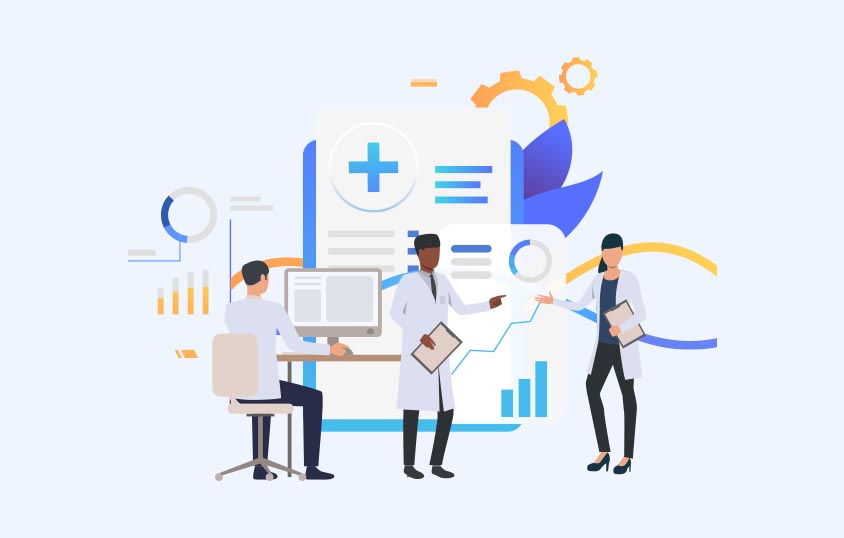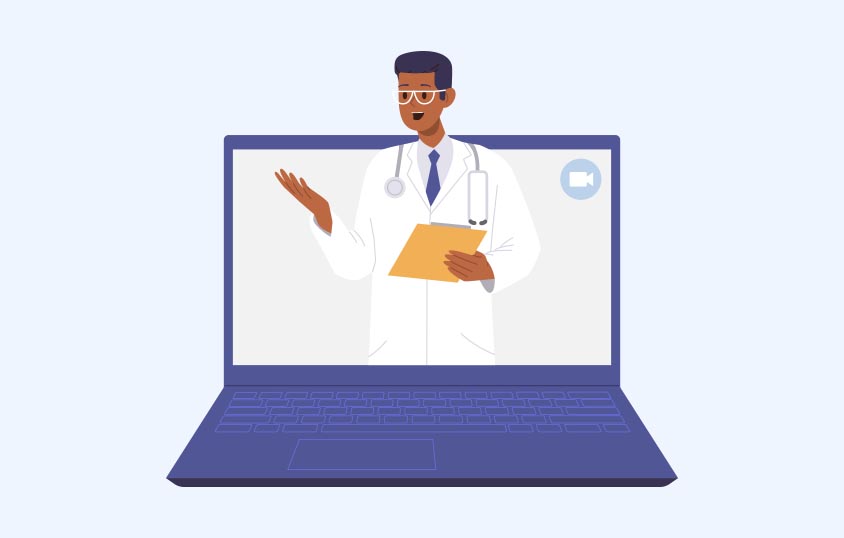Content
Recent Posts
The Future of U.S. Health IT: Trends to Watch

Healthcare technology in the United States is evolving quickly, shaped by a push for better outcomes, tighter margins, and ongoing workforce pressures. For healthcare professionals and IT leaders, the question is no longer whether to adopt new tools but how to implement them responsibly, at scale, and with clear ROI. Below are the most consequential trends reshaping clinical care and operations, explained in practical terms with an eye toward near-term impact.
Content
Telehealth & Virtual Care
Telehealth has shifted from a niche to a core access channel. Video visits, e-consults, and remote patient monitoring now sit alongside in-person care, with platforms that bundle digital intake, scheduling, e-prescribing, and diagnostics into one flow. Evidence cited by Philips suggests up to 40% of specialty issues can be resolved when primary care pulls in virtual input, and tele-ultrasound allows a sonographer to scan while a remote radiologist guides in real time. The equity impact is real, too. Federal programs continue to push virtual services into rural and underserved areas, making it easier for patients to get timely care without travel, as outlined by HRSA’s telehealth initiative.

AI & Machine Learning
AI is moving from pilots to production in both clinical and operational work. Imaging triage, risk scoring, and early warning models surface patterns humans might miss, while ambient documentation and clinical assistants reduce note burden and standardize summaries. Hospitals are also using AI to streamline coding, prior authorization prep, and staffing forecasts. Generative AI is taking shape as a virtual teammate that can summarize visits, draft letters, and translate jargon for patients. According to Philips, 85% of healthcare leaders plan to invest in generative AI over the next three years. The leaders who see value treat AI as augmentation with governance, aligning with guardrails from the FDA’s AI/ML SaMD framework and embedding outputs inside the EHR rather than forcing app-switching.
The Internet of Medical Things
Connected devices are creating a continuous view of health between visits. Home blood pressure cuffs, glucometers, cardiac patches, smart inhalers, and implantables now stream data into cloud platforms and EHRs. When paired with clear thresholds and escalation rules, clinicians can intervene earlier, manage meds more precisely, and avoid needless ED visits. The upside is significant for chronic disease and post-op recovery. The challenge is security and device management at scale, which is why many teams anchor their programs on the FDA’s premarket cybersecurity guidance for medical devices and clinical workflows that filter signal from noise. Clinical societies, including the American Heart Association, continue to publish guidance on remote monitoring programs that actually change outcomes.
Interoperability & Data Liquidity
The next frontier is making systems talk. Standards-based APIs and national exchange frameworks are turning aspiration into infrastructure so a patient’s record follows them wherever they go. With HL7 FHIR and API-driven sharing now required under the Cures Act, data can move consistently among EHRs, patient apps, labs, and HIEs, as detailed by the Office of the National Coordinator. TEFCA’s “network of networks” is laying nationwide rails for exchange, overseen by the Sequoia Project. Networks like CommonWell report 34,000-plus sites and hundreds of millions of linked records. Oracle’s leadership has framed the end state as “a global healthcare database,” where critical health information is available when needed, a vision echoed in its Oracle Health briefings. The payoff is fewer redundant tests, safer prescribing, empowered patients, and public health visibility across populations.
Cloud-Forward Infrastructure
Cloud is now a question of when and how. Providers prize scalability, faster upgrades, and stronger disaster recovery, while smaller practices gain enterprise-grade tools without racks of hardware. Identity and access controls, encryption, and network segmentation are table stakes, but the benefits are hard to ignore. Surveys aggregated by Acropolium note that more than 82% of healthcare organizations have moved some systems to the cloud, cloud adopters saw a 43% decrease in security incidents, and 80% of IT leaders consider the cloud the most secure way to manage sensitive data. Market projections put healthcare cloud at roughly 70 billion dollars in 2025, trending toward 170 billion by 2030. For implementation playbooks and governance patterns, many teams look to HIMSS resources to keep costs and risk in check.

Cybersecurity & Patient Safety
Cyber risk is now a patient safety issue. In 2024, U.S. providers suffered 181 confirmed ransomware attacks affecting 25.6 million records, with average ransom demands around 5.7 million dollars, according to HIPAA Journal. Programs are maturing toward zero trust, multi-factor authentication, endpoint detection and response, immutable backups, continuous monitoring, and frequent tabletop exercises. Regulators are pushing stronger safeguards through HHS updates to the Security Rule, while technical blueprints such as the NIST Zero Trust Architecture help security teams design defensible networks. Culture matters as much as tooling, so phishing-resistant authentication and role-based access are becoming nonnegotiable.
AR & VR for Training & Therapy
AR and VR are proving their value in both training and therapy. High-fidelity simulations help surgeons and trainees rehearse procedures, compress learning cycles, and improve confidence. In the OR, AR overlays imaging onto anatomy so teams can work with real-time guidance. For patients, immersive environments can reduce pain and anxiety, with controlled studies reporting meaningful reductions in perceived pain during wound care and orthopedic rehab. Hospitals and academic centers are incorporating these tools into curricula and care plans. For an evidence overview, see the NIH’s literature on VR in pain management and clinical write-ups from systems like the Cleveland Clinic.
Robotics & Automation
Robotics now spans surgery, logistics, rehab, and the back office. Surgical platforms continue to refine minimally invasive precision, and the robotic-assisted surgery market is projected to surpass 14 billion dollars by 2026. Outside the OR, autonomous mobile robots ferry meds and lab specimens so staff can focus on patients, while exoskeletons support rehab and mobility. The overall medical robotics market is forecast to rise from about 16.6 billion dollars in 2023 to 63.8 billion by 2032, per the World Economic Forum. Software robots are also busy. RPA is reducing repetitive work in scheduling, referrals, and claims, with healthcare case studies cataloged by groups like HFMA that focus on measurable revenue cycle gains.

Recommended Medical Software Solutions
Below are three software ecosystems that align with these trends and have proven fit for U.S. healthcare. Each is suited to different organizational profiles; all emphasize cloud readiness, interoperability, security, and measurable operational gains.
DrChrono
DrChrono is a cloud-based EHR and practice management platform designed for ambulatory care, especially independent practices and multispecialty clinics that want mobile-first workflows without heavy IT overhead. Clinicians get customizable charting on web and iPad, integrated e-prescribing (including controlled substances), and quick-build templates that reflect how each specialty documents. Scheduling, digital intake, and telehealth are built into the same system, so front office teams can confirm appointments, collect forms, and launch virtual visits without leaving the schedule view. On the financial side, DrChrono’s billing and revenue cycle features tie directly to clinical documentation, reducing rework and speeding clean claims. Practices can keep billing in-house or leverage managed RCM services that handle coding, scrubbing, and follow-up. Patient engagement comes via a portal and app for messaging, results, and payments, which increases show rates and shortens time to collect. Because DrChrono is API-friendly and built for the cloud, it plays well with third-party apps, remote monitoring solutions, and analytics tools, giving smaller organizations access to capabilities that used to require enterprise resources.
Oracle Healthcare
For health systems that need enterprise-grade breadth, Oracle’s healthcare suite, centered on the Oracle Health EHR, brings clinical, operational, and financial capabilities under a single umbrella. Hospitals can standardize inpatient and ambulatory workflows, order sets, and medication management across facilities, while care teams work from a longitudinal patient record that pulls in outside data through modern exchange frameworks. Population health and analytics modules support risk scoring, care gap closure, and quality reporting at scale, while revenue cycle and supply chain components align clinical operations with business performance. Oracle’s cloud infrastructure underpins scalability, disaster recovery options, and advanced services like AI-assisted documentation and clinical digital assistants that can retrieve information or summarize encounters. Governance and security are built in, with granular audit trails and support for zero-trust patterns that align with current cybersecurity expectations. For organizations pursuing value-based care, the attraction is a platform that can coordinate complex care across settings, measure outcomes consistently, and connect the bedside to the back office without stitching together a dozen point solutions.
SAP Healthcare
SAP’s strength in healthcare is the connective tissue between clinical operations and the enterprise functions that make care possible. Rather than replacing the EHR, SAP complements it with robust capabilities in enterprise resource planning, finance, human capital, and supply chain, areas that directly affect cost, throughput, and patient experience. Hospitals and IDNs use SAP to synchronize surgery schedules with staffing and materials, keep pharmacy and procedural inventory at optimal levels, and ensure that procurement, contracting, and vendor management are controlled and auditable. On the data side, SAP’s analytics layer unifies inputs from clinical systems, ERP modules, and external sources to provide operational dashboards and decision support for leaders. Patient engagement frameworks and integration tooling help connect device data, portals, and communications into coherent journeys that reduce missed appointments and readmissions. Deployed in the cloud, SAP brings scalability and resilience, while security and compliance controls align with healthcare’s regulatory environment. For executives focused on margin improvement, throughput, and enterprise agility, SAP delivers levers that directly impact the business of care and enable more predictable, efficient operations that benefit clinicians and patients alike.
Conclusion
The most important theme running through today’s healthcare technology landscape is integration: data, workflows, and teams must connect seamlessly if innovations are to translate into better outcomes and stronger operations. Telehealth extends reach; AI reduces friction and surfaces risk; connected devices bring the home into the care plan; interoperability and the cloud make information available where and when it’s needed; cybersecurity keeps it all safe; AR/VR and robotics expand what clinicians can do and how they learn. Choosing platforms that respect clinical reality, embed into existing tools, and measure impact is how leaders turn trends into durable advantages. Whether you are modernizing an ambulatory practice or orchestrating an enterprise-wide transformation, the path forward rewards clarity on goals, disciplined governance, and a willingness to iterate. The result is care that is more accessible, reliable, and human, powered by technology that stays out of the way and lets clinicians do their best work.
For practices considering EHR solutions, it’s advisable to conduct a thorough evaluation of the platform’s features against specific operational needs. Exploring our reviews of top EHR solutions can provide additional insights into their suitability. Additionally, utilizing our comparison tool to pit your top choices against each other, as well as browsing through our educational articles on this industry, can also aid in understanding the platform’s offerings and pricing structure. Ultimately, selecting the right EHR system involves balancing functionality, cost, and support to align with a practice’s unique requirements and goals.